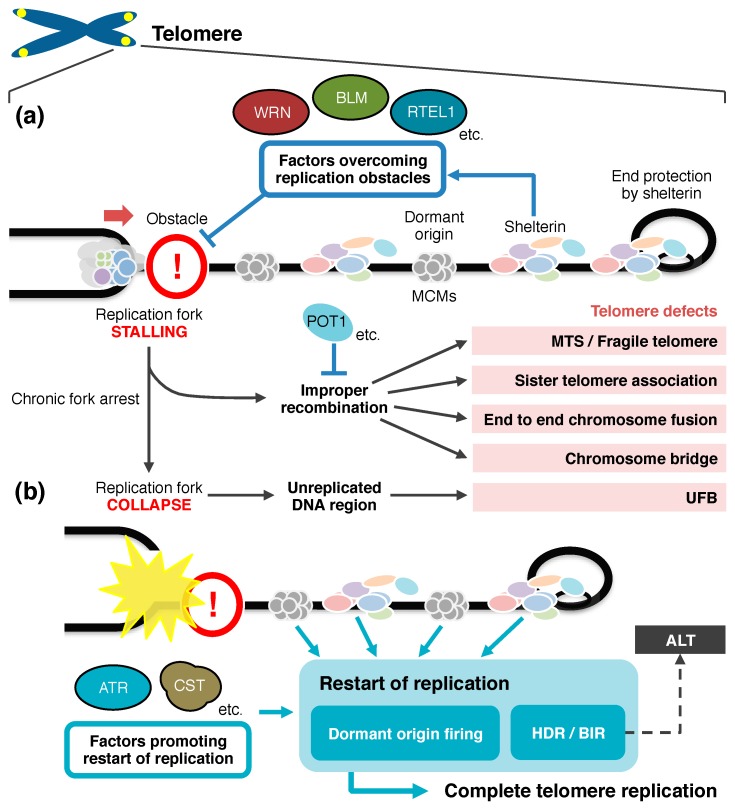Figure 3.
A model for the consequences of telomeric replication fork arrest and the different recovery mechanisms. (a) Telomeres present intrinsic obstacles, impeding the passage of replication machinery. Shelterin and accessory proteins prevent the fork stalling and repress improper recombination activity. Inappropriate recombination of the telomeric fork may result in telomere defects. (b) Persistent fork arrest might lead to fork collapse at telomeres. Restart of replication is necessary to avoid leaving an unreplicated region. Dormant origins could fire to complete telomere replication. Homologous recombination is also a general recovery mechanism from replication fork collapse. However, recombination at telomeres might increase the risk of cellular immortalization by ALT (alternative lengthening of telomeres). It is currently unknown how shelterin exactly contributes to restart of replication. BIR: break-induced replication; HDR: homology-directed repair; MTS: multi-telomeric signals; UFB: ultrafine anaphase bridge.

